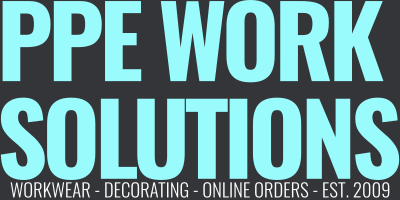Your Cart is Empty
📞 01246 268649 🚚 FREE DELIVERY
Menu

📞 01246 268649 🚚 FREE DELIVERY
Clothing
COSHH, CHEMICALS AND HOW TO STAY SAFE
March 09, 2023

The use of chemicals in modern day life has become more and more commonplace over the years. We find them in everything, even if the business we work in is not directly related to the manufacture, storage and distribution of them. So knowing about COSHH and how to work safely with these products is essential, as is having the right protective clothing and equipment as well as our ability to handle, clean up and dispose of spills in our workplace. Not only is it essential to protect ourselves, but we need to consider the wider environment and the potential impact chemicals, oils and other fluids can have if they enter our ecosystem.
COSHH covers substances that are hazardous to health, such as chemicals, products containing chemicals, fumes, vapours, mists and gases all of which can be harmful if we come into contact with them. Whether you are a business owner with a workforce to protect or self-employed and working in other people’s homes, you are responsible for the products that are used and the people that could potentially come into contact with them and as such you need to ensure that if you can't prevent exposure, you need to control it by applying the principles of good control practice as set out by the HSE. Once you have established what you are using, you need to ensure that you have a risk assessment in place to facilitate the safe handling of these products.
Firstly you need to know what you are using and what the effects of exposure are. Any product that contains a substance that is hazardous to health has to have an MSDS (Material Safety Data Sheet) that allows you to understand what you are using, how to handle it and the potential effects it can have. Having this data is essential as it will also tell you what to do in the event of an emergency. Failure to have such documentation could land you in deep water if the worse was to happen. Once you have this data you can begin to formulate your risk assessment, part of which should encompass the protective equipment needed to handle and use products safely, as well as what to do should a spill occur.
Selecting the correct PPE is important as there are many different variants in each category. When selecting both the products you use and the PPE you will need, you always need to bear in mind that you are more likely to come into direct contact with these hazardous substances should a spill occur. With this in mind, you need to ensure that you have selected the correct gloves, especially if you are handling products that contain corrosive chemicals. Do you need eye protection and if so should that come in the form of safety goggles or glasses? What about RPE (Respiratory Protective Equipment)? Are there risks associated with vapours and fumes and if so what level of respiratory protection do you need?
The risks of using these products are many, but none so much as when the product is spilled. Large volumes of hazardous substances not only require greater contact to clean up but also release more vapours and fumes that can very quickly overpower you. Knowing what you are handling, how to clean it up and having the correct absorbents is essential and dealing with a spill must form part of your risk assessment. Different liquids require different types of absorbents to safely contain and clean up spills. Knowing what you are using and selecting the right absorbent products is essential.
There are 3 main types of absorbent, chemical, oil and maintenance and each type is designed to effectively clean up the appropriate spill. For most businesses and self-employed workers that only handle small quantities of products, a spill kit is an ideal format to purchase your absorbents in. A kit will contain absorbents that can not only stop liquids from spreading but allow for the effective clean up of them as well as safe storage of used pads and socks until you are able to dispose of them safely. These kits are small, portable and can be easily stored away until they are needed. For larger businesses that handle chemicals or other liquids on a day to day business, Spill Depots can be an effective spill solution. Their modular format means your depot can be as a big or as small as is required and can be fixed to the wall or form a stand-up station. They are easily identifiable to staff in an emergency and contain all the absorbents your business needs to protect both the workforce and the wider environment. You can even use them to store the right PPE equipment your workforce needs to handle spills safely, so all of your spill solution products are kept together, making managing a spill simple, effective and quick.
